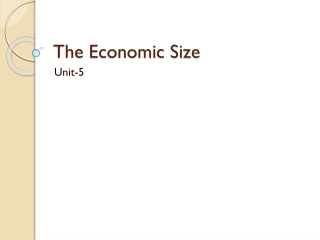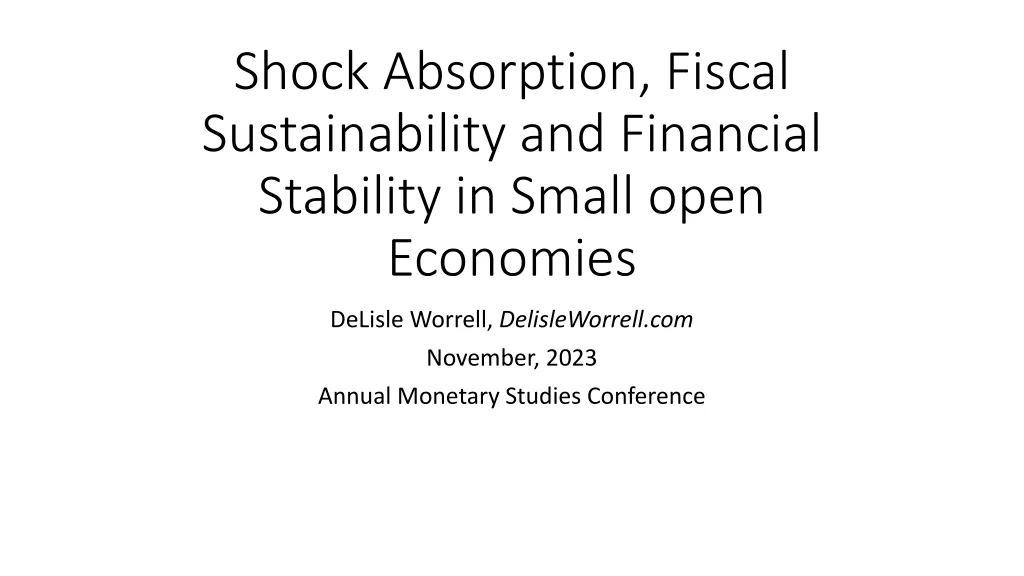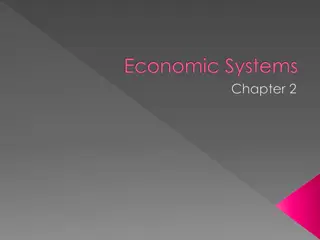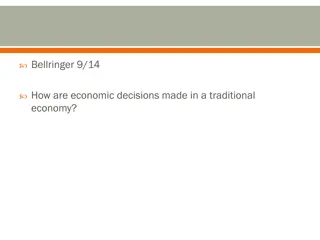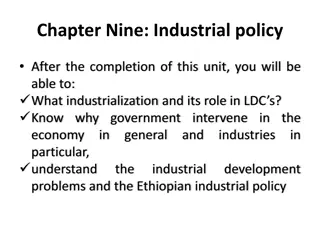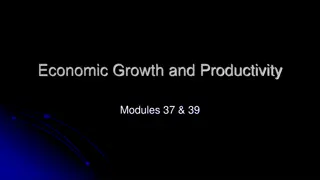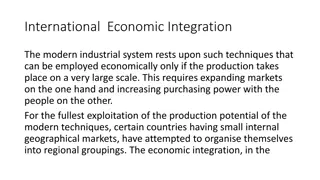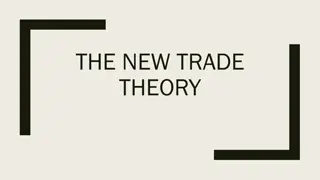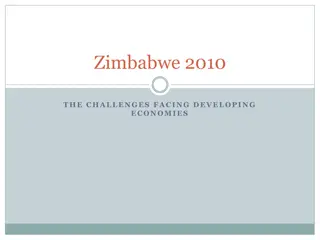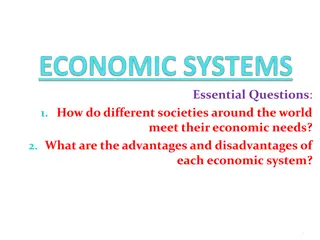Three Key Economic Questions and Types of Economies
Explore the three key economic questions regarding goods and services production, factor resources, and consumption distribution, along with insights into different economic goals, factor payments, and types of economic systems like traditional, command, and market economies.
Download Presentation

Please find below an Image/Link to download the presentation.
The content on the website is provided AS IS for your information and personal use only. It may not be sold, licensed, or shared on other websites without obtaining consent from the author.If you encounter any issues during the download, it is possible that the publisher has removed the file from their server.
You are allowed to download the files provided on this website for personal or commercial use, subject to the condition that they are used lawfully. All files are the property of their respective owners.
The content on the website is provided AS IS for your information and personal use only. It may not be sold, licensed, or shared on other websites without obtaining consent from the author.
E N D
Presentation Transcript
Three Key Economic questions and Three types of Economies chapter 2.1 If your cow isn t giving any milk maybe it s time to sell him.
Key Economic Question #1 1. What goods and services should be produced? How much of our resources should we devote to national defense, education, public health and welfare, or consumer goods --- the guns versus butter debate.
Key Economic Question #2 2. How should these goods and services be produced? What combination of factor resources land, labor, and capital should be used. i.e. manual labor versus mechanical labor.
Key Economic Question #3 3. Who consumes these goods and services? How will the income be distributed? How will factor payments be determined?
Economic Goals Making the most of resources Economic efficiency Freedom from government intervention in the production and distribution of goods and services Economic freedom Assurance that goods and services will be available and payments will be made on time. Economic predictability Fair distribution of wealth Economic equity Innovation leads to economic growth, and economic growth leads to a higher standard of living. Economic growth and innovation A safety net is provided for individuals --like welfare. Economic Security Other Goals Societies pursue additional goals, such as environmental protection.
Factor payments: income people receive for supplying the factors of production. Safety net: a set of govt programs that protect people during bad economic times.
Types of Economic Systems 1. Traditional Economy 2. Command or Centrally Planned Economy 3. Market Economy
Traditional Economies Traditional economies rely on habit, custom, or ritual to decide what to produce, how to produce it, and to whom to distribute it. Examples: Eskimos, tribal communities Why are you reading this? You should be listening to the lecture.
Centrally Planned Economy In a Command or Centrally planned economy the central government makes all decisions about the production and consumption of goods and services. Examples: Cuba, China, other communist countries, kingdoms and dictatorships.
Market Economy In a Market economy economic decisions are made by individuals and are based on exchange or trade. Examples: United States, Canada, and Australia
Types of Economic Systems Economic System What to produce How to produce For Whom to produce Traditional Determined by tradition Economic roles passed from generation to generation Determined by government officials Determined by custom Usually centered around traditional family and social units such as a tribe Determined by government officials Determined by government officials Centrally Planned (Command) Market Determined by individuals Determined by individuals Determined by individuals
Mixed Economy Mixed economies. Market based economies with limited government intervention Most economies today are mixed economies.
Types of Centrally Planned Economies Socialism every one should be treated equally economically Communism the government owns or controls most of all the goods and services -- closest to Command Economy Major difference between socialism and communism is that socialists can have a democracy while a communist believes there needs to be a violent revolution and needs a strong centrally planned, authoritarian government.
More types of Mixed Economies Capitalism- a market economy where the government has a limited control of certain markets. Taxation and spending allow the government to provide a variety of services such as education, welfare and national defense. Democratic Socialism Government owns and runs key industries such as electrical utilities, telephone networks, and health care.


